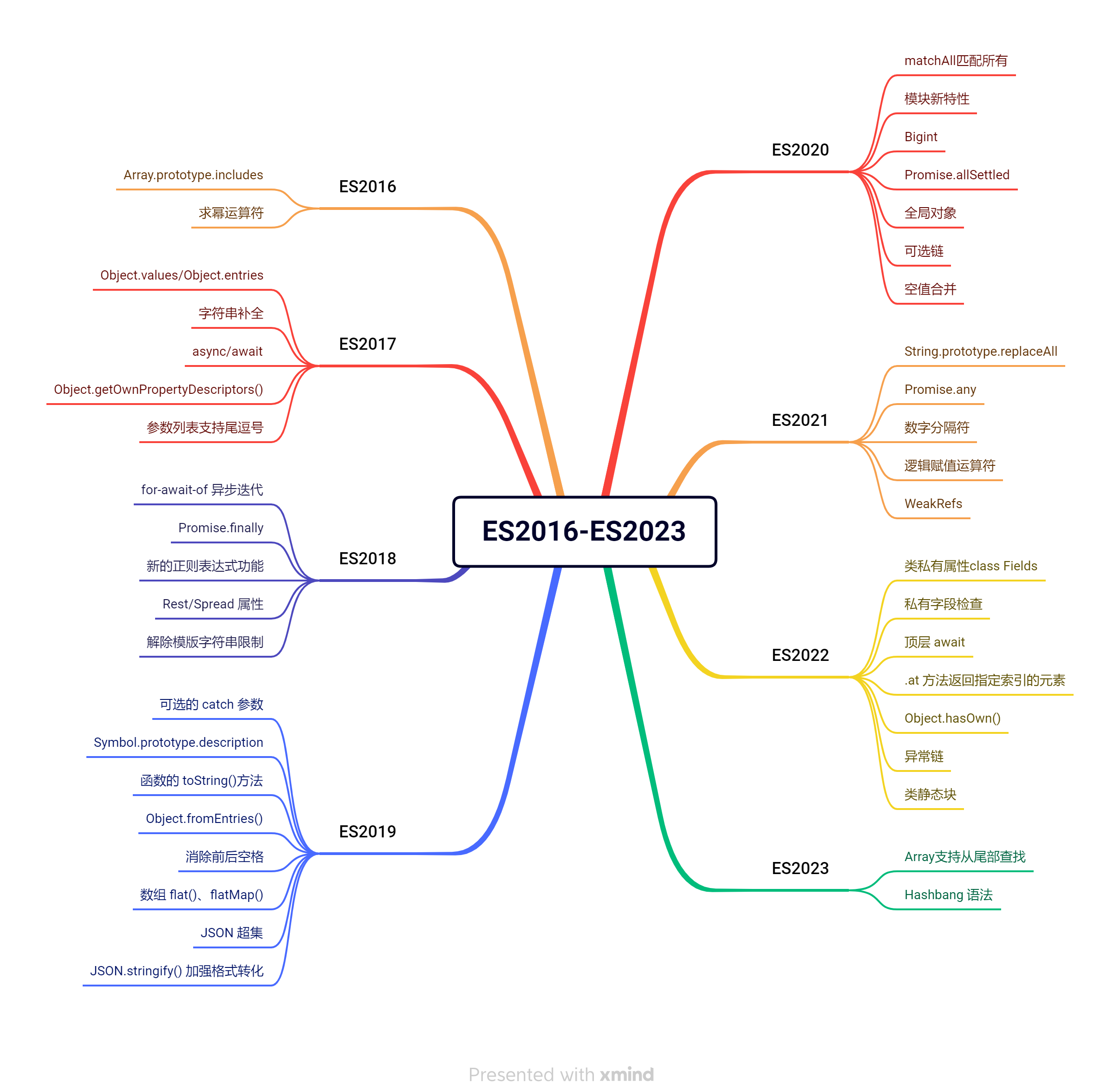Exploring The Evolution Of ES2016: A Comprehensive Guide
ES2016, also known as ECMAScript 7, marked a significant milestone in the evolution of JavaScript. This version introduced new features that simplified coding practices and improved performance. As developers, understanding these changes is crucial for writing efficient and modern JavaScript code. In this article, we will delve into the key features of ES2016, its impact on the JavaScript ecosystem, and how it has paved the way for future versions.
Since its inception, JavaScript has evolved rapidly, with each new version bringing enhancements that cater to the growing needs of developers. ES2016 is particularly noteworthy as it was the first version to follow the annual release cycle established by the TC39 committee, emphasizing a more agile approach to language development. This article will provide an in-depth look at the features introduced in ES2016 and their practical applications.
Whether you are a seasoned developer or just starting your journey in the JavaScript world, grasping the concepts introduced in ES2016 will empower you to write cleaner and more efficient code. Let's dive into the details of ES2016 and explore its significance in the world of programming.
- Exploring Jenny Dell Measurements A Comprehensive Insight
- The Ultimate Guide To The Movie Flix Everything You Need To Know
- Does Gloria Borger Have Cancer Understanding Her Health Journey
- Talissa Smalley Of Leaks The Untold Story Behind The Controversy
- Mike Tysons Penis Size Unraveling The Myths And Facts
Table of Contents
- 1. Introduction to ES2016
- 2. Key Features of ES2016
- 3. The Journey of ECMAScript
- 4. Impact of ES2016 on JavaScript Development
- 5. Future of ECMAScript After ES2016
- 6. Conclusion
- 7. References
1. Introduction to ES2016
ECMAScript 2016, or ES2016, was officially released in June 2016, introducing two primary features: the Array.prototype.includes method and the exponentiation operator. These enhancements aimed to streamline common coding tasks and improve overall code readability.
ES2016 was a significant step forward in making JavaScript a more powerful language, especially for developers working on complex applications. By incorporating these features, ES2016 addressed some of the limitations found in previous versions, making JavaScript more intuitive and user-friendly.
2. Key Features of ES2016
2.1 Array.prototype.includes
One of the standout features introduced in ES2016 is the Array.prototype.includes method. This method allows developers to check if an array contains a specific element, returning a boolean value.
- Kayleigh Mcenany Salary And Husband A Complete Insight
- Nancy Pelosi Wedding Pictures A Glimpse Into The Life Of A Political Icon
- Daniel Shalikar A Comprehensive Look At His Life And Career
- Mike Lindells Net Worth A Comprehensive Look At The Mypillow Founder
- Exploring The Luxurious Cars Of Russell Wilson A Deep Dive Into His Automotive Collection
- Syntax:
array.includes(value, fromIndex) - Parameters:
value: The value to search for in the array.fromIndex: The index to start the search from (optional).
- Example:
const numbers = [1, 2, 3, 4, 5]; console.log(numbers.includes(3)); // true console.log(numbers.includes(6)); // false
2.2 Exponentiation Operator
The exponentiation operator (**) is another key feature that simplifies mathematical calculations in JavaScript. This operator allows developers to raise a number to the power of another number in a more readable format.
- Syntax:
base ** exponent - Example:
console.log(2 ** 3); // 8 console.log(5 ** 2); // 25
3. The Journey of ECMAScript
ECMAScript is the standardized scripting language specification that JavaScript is based on. The evolution of ECMAScript has been shaped by the needs of developers and advancements in technology.
Here’s a brief timeline of ECMAScript versions leading up to ES2016:
- ES1 (1997): The first edition was published.
- ES3 (1999): Introduced regular expressions and try/catch statements.
- ES5 (2009): Added strict mode, JSON support, and array methods.
- ES6 (2015): Introduced classes, modules, promises, and much more.
- ES2016: Introduced Array.prototype.includes and the exponentiation operator.
4. Impact of ES2016 on JavaScript Development
The introduction of ES2016 features has had a profound impact on JavaScript development. Here are some ways these features have influenced coding practices:
- Improved Readability: The inclusion of
Array.prototype.includesand the exponentiation operator makes the code easier to read and understand. - Enhanced Efficiency: These features reduce the amount of code needed to perform common operations, leading to more efficient coding practices.
- Broader Adoption: As developers become aware of the new features, there is a greater push to adopt the latest standards, fostering a culture of continuous learning.
5. Future of ECMAScript After ES2016
Following ES2016, the ECMAScript standard has continued to evolve rapidly, with subsequent versions introducing even more features that enhance the language. Notable versions include ES2017, ES2018, and beyond, each adding valuable functionalities that further modernize JavaScript.
As developers, staying updated with the latest ECMAScript versions is essential for leveraging new features and maintaining code quality. Embracing these advancements will ensure that developers can write more robust, efficient, and maintainable code.
6. Conclusion
In conclusion, ES2016 has played a vital role in the evolution of JavaScript, introducing features that simplify coding and improve efficiency. By understanding and utilizing these features, developers can write cleaner and more effective code. As the JavaScript landscape continues to evolve, it is crucial for developers to stay informed and adapt to new standards.
We encourage you to share your thoughts on ES2016 and its impact on your coding practices in the comments below. Don't forget to explore other articles on our site for more insights into JavaScript and related technologies.
7. References
- ECMAScript Language Specification - ECMA-262
- MDN Web Docs - Array.prototype.includes
- MDN Web Docs - Exponentiation operator
- Understanding Ippa010054 A Comprehensive Guide
- Is Kat Timpf Pregnant Unraveling The Truth Behind The Rumors
- Kaitlan Collins Fired What You Need To Know
- Does Rachel Maddow Have A Child A Deep Dive Into Her Personal Life
- Eric Graise The Inspiring Journey Of An Acclaimed Actor And Advocate

【雷克萨斯ES图片汽车图片大全】易车

2016 Lexus ES350 review What a difference an engine makes TFLcar

【编程指南】ES2016到ES2023新特性解析一网打尽 码农之家